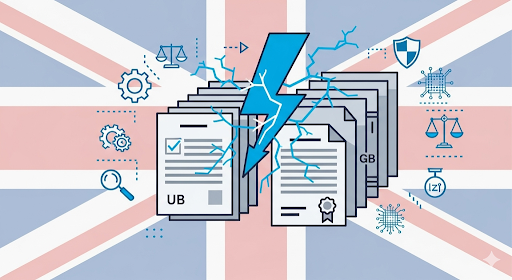Lightning does not negotiate. It strikes where physics dictates, leaving compliance teams to translate hazard into defensible action. In the UK, that translation rests on a bedrock of standards and statutory duties that make Lightning Risk Calculation a formal, auditable exercise rather than guesswork.
Core standards to know
BS EN IEC 62305 sets the framework for protection against lightning in the UK through four coordinated parts.
Part 1 covers general principles and terminology.
Part 2 defines the risk assessment method, including loss categories, tolerable risk, and the stepwise calculation that links strike probability to protective measures.
Part 3 addresses physical damage to structures and life hazards.
Part 4 governs protection of electrical and electronic systems against surges.
The current edition aligns with international revisions and emphasises strike point density, refined loss scenarios, and clearer calculation pathways that suit modern assets with sensitive electronics. Lightning software that implements Part 2 correctly mirrors these definitions, so results remain consistent across projects and audits.
Legal duties that sit behind the numbers
Standards guide practice. Statutory instruments impose duties. The Electricity at Work Regulations 1989 require precautions to prevent danger from electrical energy, which includes transients from lightning. Health and safety law expects a competent, evidence based approach to risk reduction. When a duty holder adopts BS EN IEC 62305, documents the Lightning Risk Calculation, and maintains protective measures, the file shows reasoned compliance rather than superficial box ticking. Insurers look for the same paper trail. So do courts after incidents.
From inputs to decisions
Part 2 asks for inputs that reflect exposure and consequence. Location, structure dimensions, occupancy profile, service entries, and the presence of flammable substances all feed the calculation. Strike probability, expressed via ground strike point density, links geography to expected events. Loss of human life, public service, cultural heritage, and economic value each carries a tolerable risk threshold. The calculation compares calculated risk to tolerable values, then points to protection levels and surge categories. In plain terms, the math converts site facts into design targets that a competent engineer can deliver.
What changed with the latest updates
The modernised text clarifies several areas that matter on real projects. Strike point density replaces bare flash density to reflect multiple ground contacts in a single flash. The treatment of internal systems aligns more closely with real network architectures, reducing over conservatism in some layouts and tightening it in others. Risk component definitions read more plainly, which helps reviewers follow the chain from assumption to result. For teams using Lightning software, that means cleaner input mapping, fewer hidden assumptions, and reports that a non specialist stakeholder can still follow.
Interaction with building regulations and inspection
British Standards sit alongside building control and maintenance regimes. Where a Lightning Protection System is specified, inspection and testing should follow the intervals and methods in BS EN IEC 62305 and related guidance. Records ought to capture continuity, bonding integrity, earth resistance, and visible condition, paired with periodic review of the original Lightning Risk Calculation when use or geometry changes. A tall extension, a new data room, or added rooftop plant can shift the risk profile. Treat the calculation as a living document, not a one off spreadsheet.
Common pitfalls that derail compliance
- Reusing legacy BS 6651 calculations without re baselining against BS EN IEC 62305
- Treating surge protection as optional even when internal system loss dominates the risk budget
- Confusing generic thunderstorm maps with the defined strike point density values expected by the method
- Issuing a design without a traceable calculation annex and a clear link to protection level selection
Role of modern tooling
When a team uses Lightning software aligned to BS EN IEC 62305, the workflow tends to tighten. Inputs match the standard. Assumptions stay visible. Reports export with the clause references that reviewers need. For organisations with multiple sites, consistent templates reduce variance in the Lightning Risk Calculation while preserving site nuance. Tooling does not replace competence. It does remove clerical friction and helps audits move faster.
Practical steps for duty holders
- Commission a calculation to BS EN IEC 62305 Part 2 for each relevant structure
- Set protection levels and surge measures directly from the result set
- Test and maintain installed systems at the intervals set out in the standard
- Revisit the calculation after material site changes or incident learnings
- Keep a complete document pack: inputs, method, outputs, design correlation, inspection records
Conclusion
UK compliance for lightning protection rests on disciplined application of BS EN IEC 62305 and clear statutory duties around electrical safety. The standard gives the method. The law expects diligence. Treat the Lightning Risk Calculation as the hinge between the two. With competent practice and suitable Lightning software, the path from hazard to documented protection becomes defensible, repeatable, and clear.








Leave a Reply